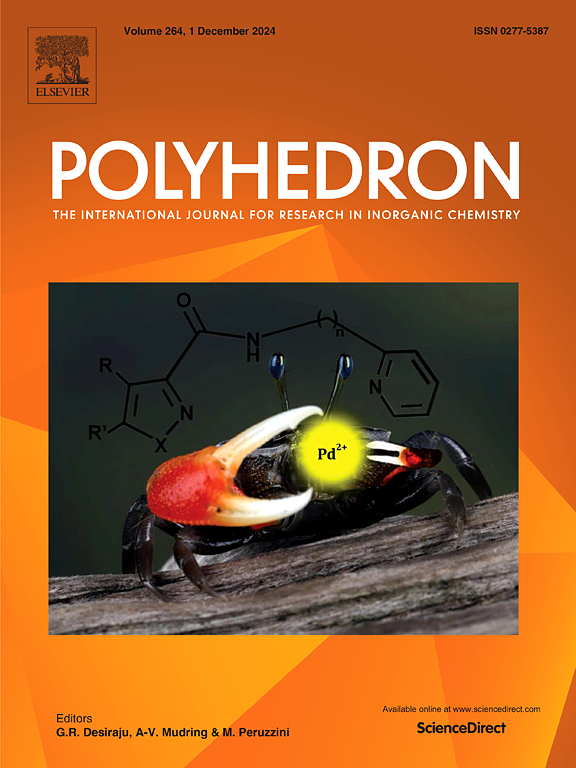An overview of porphyrin-based catalysts for sulfide oxidation reactions
IF 2.4
3区 化学
Q2 CHEMISTRY, INORGANIC & NUCLEAR
引用次数: 0
Abstract
Oxidation is well known as a vital transformation reaction employed in the organic synthesis field for creating useful oxidation products. Regarding environmental problems, great efforts were concentrated on using the properties of green chemistry in catalytic reactions. Developing a green, eco-friendly, and economical method for efficient and selective oxidation of different organic materials is critical. Since sulfoxides are significant compounds in organic synthesis and biological systems, the selective oxidation of sulfides into sulfoxides is necessary for organic synthesis. Sulfoxides are synthetic intermediates that are used to make a variety of chemically and biologically active compounds. Developing new strategies and green catalysts for the selective oxidation of sulfides to sulfoxides has interested some research groups worldwide. Porphyrins (Por) are well-known as macromolecular heterocyclic material created from four pyrroles attached by a methylene bridge and have highly hopeful electrochemical and optical catalytic features. Porphyrin-based catalysis often requires mild reaction conditions and can use environmentally friendly oxidants like O2 or hydrogen peroxide. This aligns with green chemistry principles by reducing the need for harsh chemicals and generating fewer by-products. These attributes make porphyrins and their derivatives invaluable in sulfide oxidation reactions across academic, pharmaceutical, and industrial applications. Hence, many investigations have concentrated on porphyrin compounds in electrochemical catalysis and photo electrocatalysis, mostly in the catalytic oxidation reaction. Porphyrin-based catalysts were vastly employed as efficient catalysts in this transformation due to their non-toxicity, powerful catalytic ability, and unique characteristics. Utilizing a porphyrin-based catalyst to oxidize sulfides into sulfoxides selectively can make the procedure more efficient, selective, and eco-friendly than prior methods. Different types of catalysts based on porphyrin-based homogeneous catalysts, porphyrin-based heterogeneous catalysts, and porphyrin-based photocatalysts have been studied here. The specific goal of this review is to highlight the application of porphyrin-based catalyst systems in the oxidation of sulfides from 2014 to 2024.

求助全文
约1分钟内获得全文
求助全文
来源期刊

Polyhedron
化学-晶体学
CiteScore
4.90
自引率
7.70%
发文量
515
审稿时长
2 months
期刊介绍:
Polyhedron publishes original, fundamental, experimental and theoretical work of the highest quality in all the major areas of inorganic chemistry. This includes synthetic chemistry, coordination chemistry, organometallic chemistry, bioinorganic chemistry, and solid-state and materials chemistry.
Papers should be significant pieces of work, and all new compounds must be appropriately characterized. The inclusion of single-crystal X-ray structural data is strongly encouraged, but papers reporting only the X-ray structure determination of a single compound will usually not be considered. Papers on solid-state or materials chemistry will be expected to have a significant molecular chemistry component (such as the synthesis and characterization of the molecular precursors and/or a systematic study of the use of different precursors or reaction conditions) or demonstrate a cutting-edge application (for example inorganic materials for energy applications). Papers dealing only with stability constants are not considered.
 求助内容:
求助内容: 应助结果提醒方式:
应助结果提醒方式:


